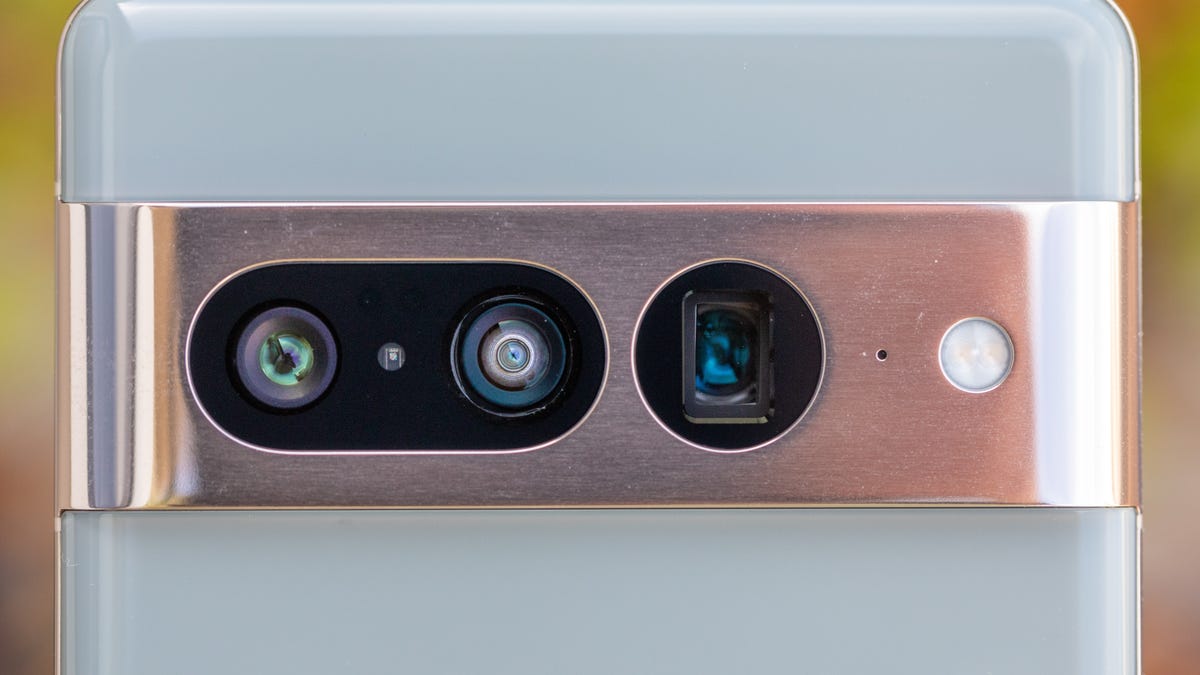Google Pixel 8 to Take Better HDR Photos, Report Says
The Pixel 8's camera will reportedly use staggered HDR technology, an improved technique for shooting scenes with both bright and dark areas.

Google applies computational photography processing to squeeze more out of its Pixel phones' camera hardware.
Google's Pixel phone team could be adding a new feature to its 2023 Pixel smartphone product to try to stay ahead in the photography game.
The Google Pixel 8 will get a camera sensor capable of staggered HDR, an upgrade to the technology phones use today to shoot in challenging lightning, leaker Kuba Wojciechowski said Monday on Twitter. Wojciechowski said the code for the Google Camera Go app, a lighter version of Google's camera app, mentions staggered HDR for the 2023 Pixel devices, reportedly code-named Husky and Shiba.
HDR, short for high dynamic range, is a computational photography technology that enables cameras to take photos of scenes with both bright and dark areas. That's a particular challenge for phones' small image sensors. Google pioneered a method called HDR+ that stacks several underexposed fames into one shot, a technique that did a better job of keeping skies from washing out into a blank white patch, then later added a single brighter frame to capture dim areas better. The tricky thing about HDR, though, is that the scene can change from one frame to the next, leading to ghosting and other artifacts.
Staggered HDR is designed to counteract that ghosting problem by capturing multiple frames closer to simultaneously. HDR often combines bright, medium and dark exposures taken in succession, but with staggered HDR, the sensor doesn't wait for one frame to finish before it starts gathering data for the next frame. For example, it could be retrieving the bright frame data from the pixels across the bottom of the sensor as it also retrieves dark-frame data from the top.
The sensor on the Pixel 7, reportedly the Samsung GN1, doesn't support staggered HDR. Wojciechowski said the next Pixel could use the Samsung GN2 sensor, which does support the feature. The GN2 also features larger pixels -- 1.4 millionths of a meter across compared to 1.2 microns for the GN1 -- that could offer a better foundation for color and dynamic range.
Google didn't immediately respond to a request for comment.
The Pixel line haven't been commercial hits, but historically they've often been leaders when it comes to smartphone photography. Although Android remains the most widely used mobile operating system globally, Google is losing ground in the US, with Apple's iOS taking the lead. Google is responding with a more aggressive Pixel phone push and a broader suite of accompanying products like the Pixel Buds Pro earbuds, the Pixel Watch and, coming in 2023, the Pixel Tablet. This ecosystem approach mirrors the strategy of smartphone leaders Samsung and Apple.
The upcoming Pixel Tablet, code-named Tangor, might also see a "pro" version -- Wojciechowski spotted "TangorPro" while examining the code. That could mean a higher-end Pixel Tablet will also could be in the works.

